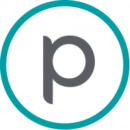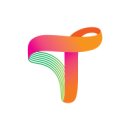If at first you don’t succeed, sky-diving is not for you — but a tech startup certainly could be.
That’s the message team leaders at three fast-growing San Francisco companies are sending loud and clear as they encourage employees to bring forward-thinking ideas to the table. Though cultures of innovation are fundamentally geared toward turning new ideas into business solutions, embracing failure is also a valuable part of any creative work collaboration.
Just ask Jen Gussman, a senior director of customer success at Planet. Her company relies on daily satellite data to deliver detailed geospatial imagery; among Planet’s clients are businesses, governments, researchers and journalists, meaning its impact — on the economy, sustainability and even security — is felt worldwide.
But every discovery that’s pushed Planet forward came after lengthy periods of trial and error, ones that the company factors into its creative process.
“We promote innovation at Planet by allowing for failure,” Gussman said. “Our leadership encourages us to try new ways of achieving outcomes, which doesn’t always equate to success.”
Instead, higher-ups at Planet welcome imperfect solutions as a natural part of progress, asking only that employees feel empowered to keep taking leaps, no matter where they land. That’s the key to “creating a creative problem-solving culture,” Gussman said. “Leadership offers support, coaches through the process and guides if things get off track,” she added. “We can always pause in the moment and use our learnings to improve a given plan or process.”
Similarly innovative cultures are thriving at Afresh, a company that uses artificial intelligence to power an operating system for grocery retailers, and Twin Health, which combines sensors and machine learning to help people manage diabetes and other metabolic diseases. Representatives from all three companies told Built In about fostering innovation in the workplace and maintaining it amid widespread growth.
Using space science to improve life on Earth has always been the mission for aerospace data company Planet. But designing, building and operating a constellation of imaging satellites is a challenge that changes, literally, as the world turns. To continuously innovate, the company maintains a “people-first culture,” said Senior Director of Customer Success Jen Gussman, who focuses on the Americas region.
What makes Planet’s culture innovative?
I see Planet embracing innovation around the company, including through the pilot programs we are driving. Not all that many candidates in the U.S. have remote sensing and geographic-information-system (GIS) expertise; as such, it takes hard work to build out our recruiting pipeline. Recently, we’ve begun pioneering an “apprentice program” in the U.S., which is a symbiotic win for both Planet and students we’re hiring. While this is already a formalized program in our Europe, Middle East and Africa region, it’s new to the Americas region. It’s a great opportunity to funnel top candidates and their fresh, innovative ideas into the company.
Additionally, Planet innovates through our mission-based activities and culture. We are literally making change in the world around us, and that’s deeply ingrained in our communal sense of self.
Culture is something every employee contributes to. How do you personally make space for new ideas?
It starts with our hiring process. Being intentional about diversity in hiring means that you avoid homogeneous team cultures where everyone thinks and acts alike. Fostering diversity in life and professional experience, temperament, problem-solving styles and personality paves the way for innovation across the board.
A strong work ethic and standards of high performance can look and feel different where different people are concerned. Innovation thrives in environments where team members’ voices are heard and respected. They’re empowered to do their jobs well, they are clear on expectations and vision, and a strong culture of respect and empathy takes root.
Personally, I am spreading innovation by creating new roles within my team that help drive value internally and externally. With these new roles, we’re looking to capitalize on unique skill sets and nurture that talent within the organization.
What challenges have you faced in maintaining an innovative culture, particularly as Planet has grown?
Our current challenge is too much innovation! It’s a great problem to have, and one that comes from hiring a lot of incredible leaders in a short amount of time. These leaders have a clear, executable vision and were hired to transform their specific area of the organization. In order to execute on so much change, our cross-functional collaboration has to be extraordinary. When we’re moving this fast, with this many ideas, all teams must communicate about and integrate their initiatives. If we don’t do this well, we create gaps as we build, duplicate efforts and stop working toward a shared vision.
Planet is aware of this challenge and created cross-functional pods to alleviate siloed work. The idea here is to orient around the atomic unit of a small team with complementary skills, allowing for better communication, more visibility and empowerment, less escalation and faster execution. It forces team members at Planet to think differently about how we achieve as a cross-functional team, and most importantly, it facilitates accountability. Our goal is to figuratively link hands as we grow and scale.
With its artificial intelligence-powered fresh food optimization platform, Afresh aims to enable grocers to eliminate food waste while keeping their shelves stocked. Building software to tackle many problems unique to the fresh food supply chain requires constant, communal innovation. “In the best-case scenario,” said Jeff Kolesky, CTO, “innovation happens across all teams, all the time.”
What makes Afresh’s culture innovative?
True innovation isn’t something that happens during a hackathon or is even specific to a certain team. When teams have the right number of people equipped with the right skill sets to accomplish their goals, that’s a condition for innovation.
When a company prioritizes innovation in its mode of operations, they create space to try things that might fail. Folks also have to be supported if they don’t accomplish those goals. Through failures, we can learn things that help us create something better.
Culture is something every employee contributes to. How do you personally make space for new ideas?
The most important thing an individual can do is not quash ideas when they are first presented. If ideas are shot down or criticized quickly, people learn to stop suggesting them. I stay open to people making wild suggestions and encourage them to pursue those ideas on occasion.
For my own innovation, I find that reading about technology, engineering management and product development seeds concepts in my brain. Getting away from work for a bike ride helps me clear my mind. When the time comes, I’m able to synthesize those disparate ideas and bring them to life. It’s in that specific moment that innovation occurs.
What challenges have you faced in maintaining an innovative culture, particularly as Afresh has grown?
Some aspects of our product suite are more obviously ready for innovation than others. The “zero down” button in our app, which enables produce managers to more quickly indicate when they do not need to order an item, is an example of true product innovation. Within the machine learning org at Afresh, we’re building never-before-seen models, which is certainly a challenge but also an opportunity.
Like most companies trying to balance innovation and delivery, one challenge we face is the backup that results when teams have a long task list they need to tackle. When folks aren’t able to get the basics of their job done, it prevents innovation from happening. The goal here is to help the team get out of that mode so they have space to innovate.
As a leader, my goal is to make sure innovation remains a priority. Even if something doesn’t show up as a product feature, it’s the responsibility of each engineer to always be thinking creatively – about their jobs, the tools they’re using, and the problems they’re trying to solve. When that happens, even some of our biggest perceived failures become big wins that allow the next new ideas to take hold.
Twin Health’s AI-backed “digital twin” product creates predictive models of patients’ individual metabolisms, in order to help them manage, reverse and prevent chronic metabolic diseases. Such an invention was possible because developers took risks, said Chief Technology Officer Terry Poon, who sees guided, intentional experimentation as key to Twin Health’s future. “That’s our North Star while exploring the wilderness,” he said. “As our team has grown, it has become even more important to nurture culture and ensure our innovation scales alongside us.”
What makes Twin Health’s culture innovative?
Purposeful experimentation is essential. Innovation requires experimentation, by which I mean trying new and unproven approaches rather than relying on what’s tried and true. This needs to be guided by a clear articulation of the end goal, including which business outcomes we want to achieve and which metrics to move.
In the process of experimentation, teams can often run into false leads and dead ends. Fail-fast culture, as I’d describe it, means creating a safe space to recognize such dead ends and fail quickly, so that teams can try a different approach. Failures can often be great learning experiences and lead to better approaches.
Finally, the beginner’s mind is a concept emphasized by our CEO, Jahangir Mohammed. Innovation is about coming up with a new solution to a problem, or sometimes an entirely new way of looking at the problem. To do this, the team needs to let go of preconceived notions and established ways of doing things, to approach the problem like a complete beginner. This can open up new solutions that would otherwise be missed.
Culture is something every employee contributes to. How do you personally make space for new ideas?
As a company, we innovate at the intersection of AI, sensor data and medical science. Our leadership team actively encourages research and experimentation in these areas. This starts with developing deep understanding, from building machine-learning (ML) models to understand the complex drivers of metabolic health to analyzing data from heterogeneous sensors to understand their capabilities and behaviors in different scenarios.
Such understanding allows teams to develop fundamental innovations, like individualized ML-powered health recommendations and sensor-powered insights. Besides technical innovation, we also encourage process innovation. Every sprint, our teams perform retrospectives to reflect on what to start, stop and continue; this improves our processes, allowing us to continuously adapt to the needs of our teams and business.
What challenges have you faced in maintaining an innovative culture, particularly as Twin Health has grown?
One challenge is ensuring that individual engineers continue to be recognized for their innovations. We have monthly “Engineering Star Awards” to recognize one engineer who has achieved great business impact while exemplifying our company’s values; this is based on nominations across the entire team and has been a successful way to recognize individual innovations.
A second challenge is preventing excessive bureaucracy and hierarchy from stifling innovation. To do this, we have organized our team into autonomous pods, each comprising a group of engineers, product managers and UX designers with a clear charter. Each pod can innovate on its own without depending excessively on other pods.
A third challenge is scaling cross-functional collaboration. At Twin, we thrive on interdisciplinary collaboration, whether across medical science and machine learning, mobile engineering and UX or platform engineering and research. We’ve designed the process to ensure that different disciplines are aligned on the same outcomes, which also encourages collaboration.









